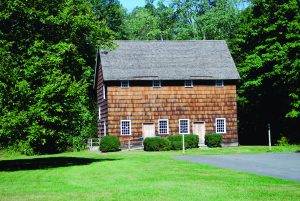
Today, North Castle’s historic buildings on Bedford Road in Armonk look tranquil, with the small schoolhouse and blacksmith shop serving as charming reminders of a simpler time. Two hundred and forty years ago, though, the site was a training ground in one of the world’s bloodiest, and most historically significant, geopolitical conflicts, as rebel militias headquartered in what is now called Smith’s Tavern, practicing their shooting in the fields out back. The town was viciously divided between rebels and royalists, a division that makes today’s political disagreements appear muted.
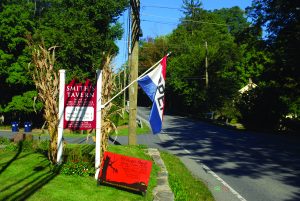
“North Castle was probably the most hotly contested of all the spots in Westchester, because we had some long-established families with money,” Town Historian Sharon Tomback explains, as she leads this reporter through a tour of the tavern. “Obviously they didn’t want to be revolting because they were well-off and happy.”
The North Castle Historical Society works to make sure this history is not lost for future residents. But preserving these aging buildings is not easy–or cheap.
“It’s very expensive to maintain old buildings,” says Tomback. “I say to friends, ‘You know what it costs to maintain your home. Now multiply that times four, because there are four old buildings.”
On Sept. 12, the historical society held its major annual fundraiser at Amore Italian Kitchen in Armonk, raising close to $15,000 for the society. With much work to be done, raising money is a year-round task, Tomback notes. So how does the society get the funds to keep up with everything it needs to function?
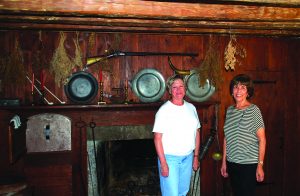
“We beg,” Tomback says, laughing. The society has a list of around 500 donors, she notes, who consistently donate to the society to help it carry out its mission. “They are highly supportive, and have never turned us down.” Some even continue to donate after they’ve moved away.
Smith’s Tavern, in which the society is located, didn’t actually belong to the Smiths until after the revolution. The tavern has served as a residence, an inn, and even a post office. Visitors today can still see the bar at which guests were served drinks in centuries past, though unfortunately visitors can no longer order a drink. Behind Smith’s Tavern are three more historic buildings: A Quaker meeting house, a blacksmith shop, and a one-room schoolhouse. “I think we’re very lucky in North Castle to have these four ancient buildings survive,” Tomback notes. “It’s only through the foresight of the incorporators of the North Castle Historical Society that these buildings have survived all these years.”
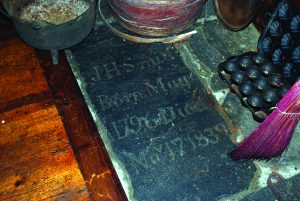
Since 2012, Anna Maria Marrone has served as president of the historical society. Marrone, who has lived in Armonk for 42 years, was born in Italy, where some buildings date back thousands of years. Though the history of the United States doesn’t compare in terms of length, Marrone finds it no less fascinating.
“Everything in Italy is old, and it’s very well taken care of,” Marrone, a former town assessor, notes. “People want it to be there, and to take care of the homes that are there. So we would like the same thing to happen here, because this is so amazing.”
One of Marrone’s ongoing projects has been an effort to preserve and digitize old newspapers, dating back to 1913.
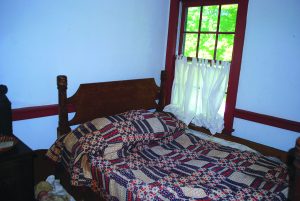
“They were going bad because we had no place to preserve them,” says Marrone. The society teamed up with the North Castle Public Library for the project and has managed to save many newspapers from the past 100 years. Next year, North Castle will be featured in a book from the “Images of America” series, which is sold at bookstores and features historical pictures from thousands of towns across the country. Tomback spent her spring and much of her summer preparing pictures and cutlines for the publisher.
“For three months,” she recalls, “every time someone called I said, ‘Not now.’” The book is expected to be released in January or February.
Smith’s Tavern is also home to a changing exhibition highlighting the region’s history. Now on display are cast irons. Other artifacts found at the tavern include corn cobb pipes smoked by visitors to the inn, a beehive oven, a rope bed, and a silver cup believed to have been used by General George Washington during the revolution. Part of the tavern was constructed later; in fact, an 1812 diary entry refers to Mr. Smith’s “new room.”
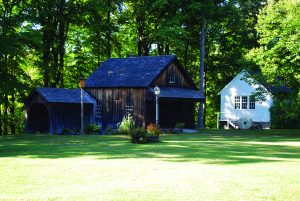
September’s fundraiser at Amore, which the society called “Partner in Preservation,” was sponsored by Houlihan Lawrence in Armonk. “It’s important to keep the heritage alive in the community, to show the things that made the different communities what they are, and to respect that history,” says Barry Graziano, Houlihan Lawrence’s Armonk manager.
“It’s always good, in a values sense,” said Graziano, “to see where you’ve come from and where you’ve gone, and I think the historical society reminds people of that.”
While Tomback and Marrone recognize the importance of wooing donors, their greatest focus is bringing children to the society’s facilities and connecting with them at a young age. A Colonial Crafts Day was held in October, and a Halloween party is scheduled for the end of the month.
“If you get somebody interested early, it sort of continues for the rest of his or her life,” Tomback says.
Run by volunteers, the historical society has a board of 23 trustees. A team of about a dozen docents lead tours of Smith’s Tavern and other facilities, with the buildings open from 2 to 4 p.m. on Wednesdays and Sundays for visitors, with private tours also available.
Andrew Vitelli is a Westchester native and the editor of Inside Armonk magazine.
